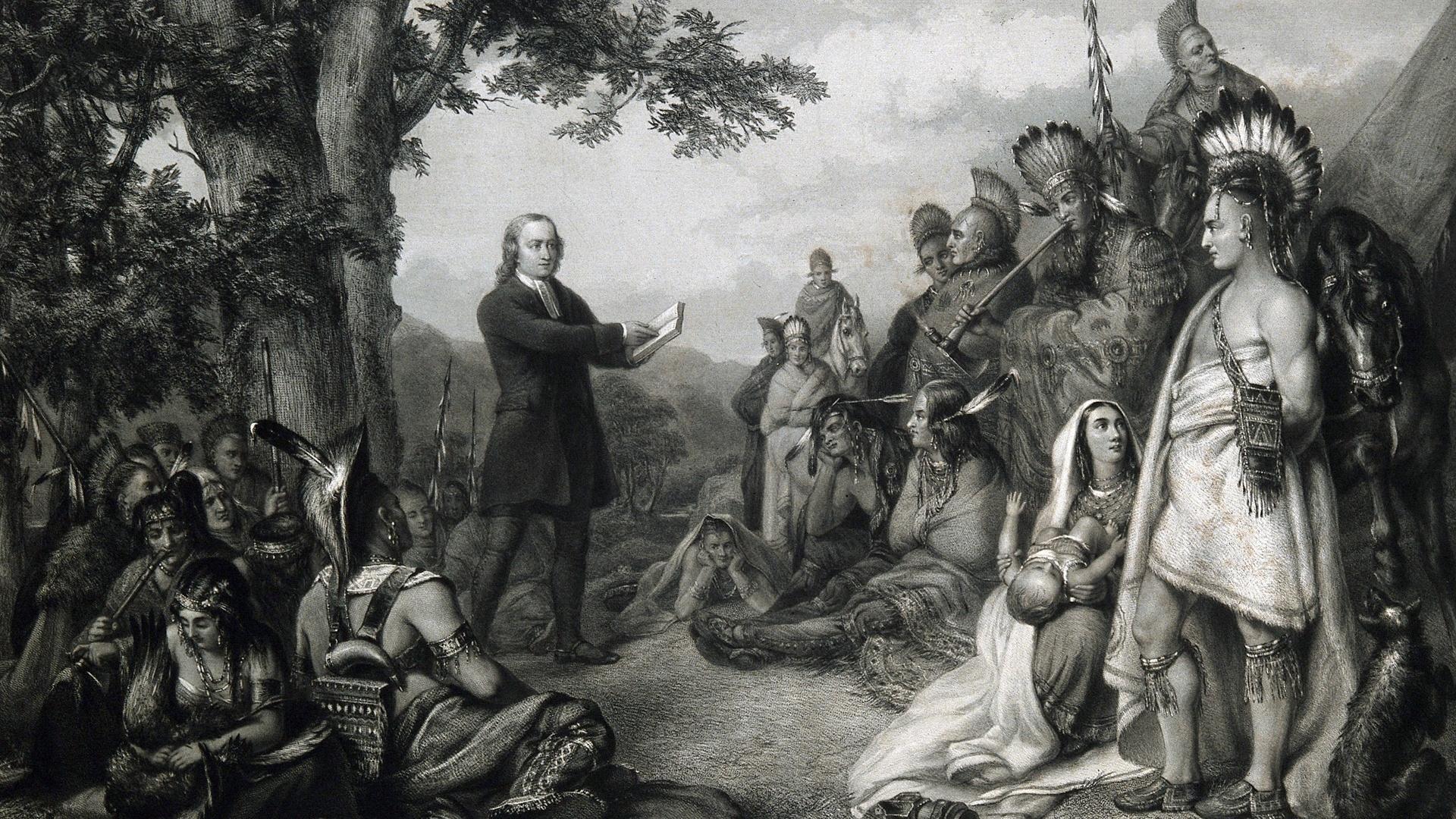
Haudenosaunee Influence on the Women's Suffrage Movement
by Sally Roesch Wagner
The fight for women to vote began here in New York in 1848 with the Seneca Falls convention, correct? Wrong. Women of the six nations Haudenosaunee (Iroquois) confederacy have had political voice on this land for at least 1,000 years. Our history lies when it tells us that nothing happened on this land until settlers arrived from Europe.
The male chiefs who are the representatives of their clan in the confederacy of the Mohawk, Oneida, Onondaga, Cayuga, Seneca, and Tuscarora Nations are selected, held in office, and removed by women – the clan mothers. Founded on the shores of Onondaga Lake, this oldest continuing democracy in the world is based on a system of gender balance. The position of the chief is vested in the clan mother, who is the eyes and ears of the people, while the chief is her voice. Women were “the great power among the clan, as everywhere else,” Elizabeth Cady Stanton marveled. The clan mothers “did not hesitate, when occasion required, ‘to knock off the horns,’ from the head of a chief,” Stanton told the National Council of Women in 1891. The clan mother had – and still has - this responsibility of removing a misbehaving chief from office, Stanton understood. If he physically or sexually violated a woman or child, he would immediately be removed from his position by his clan mother. Lucretia Mott wrote about listening to “speeches of their chiefs, women as well as men” (clan mothers and chiefs) when she visited the Cattaraugus Seneca community during the summer of 1848 before Mott, with Stanton and Quaker friends, organized the Seneca Falls convention.
While it was illegal for women in every state to vote and only white men could vote, women citizens of the six nations of the Haudenosaunee (Iroquois) confederacy had full and equal participation in their government, which was based on consensus with everyone having a voice. The suffragists knew that Indigenous women had equal political rights, and were inspired to work for their own by seeing the practice of true democracy in action.
Indigenous women of many nations had a political voice, the president of the National Woman Suffrage Association, Matilda Joslyn Gage, wrote in an 1875 New York Evening Post article. Gage remarked, “among some tribes woman enjoys almost the whole legislative authority and in others a prominent share.” Nor was the political authority of Haudenosaunee women limited to the choosing of their clan representative. They “exercised controlling power in peace and war, forbidding at will its young braves to enter battle, and often determining its terms of peace,” Gage explained.
Political authority naturally occurred in a society in which women had economic independence, rights to their bodies and children and spirituality authority. Women held a sacred position, along with Mother Earth, as the creators and sustainers of life. Responsible for the land, women were the agriculturalists and raised the food for their communities. Determining food distribution, they controlled the collective economy. Everyone, women, men, and children, had their own private property as well.
Because of the sacred respect in which they were held, and the equality of the social, political, economic, and spiritual systems, rape and other acts of violence against women by most accounts were rare in indigenous societies prior to European contact. “It shows the remarkable security of living on an Indian Reservation, that a solitary woman can walk about for miles, at any hour of the day or night, in perfect safety,” Mary Elizabeth Beachamp, a Syracuse resident, wrote.
Women had the absolute control of their own bodies and chose if, when, and how they would birth. It was a matrilineal system, the children came through the female line into their mother’s clan family. A Haudenosaunee husband moved in with his wife's extended household, where he and the other husbands stayed so long as they abided by the women's rules. Stanton admiringly explained in her 1891 National Council of Women speech how Haudenosaunee divorce worked. “No matter how many children, or whatever goods he might have in the house, he might at any time be ordered to pick up his blanket and budge; and after such an order it would not be healthful for him to attempt to disobey,” she said.
Indigenous women also had the responsibility for planning the spiritual ceremonies. “Never was justice more perfect; never was civilization higher,” Gage wrote admiringly.
United States women lived a life the mirror opposite until they organized and demanded change. Rather than being seen as sacred, settler colonial women came from a religious tradition that ordered them to be under the authority of their husband as punishment for Eve bringing sin into the world, Stanton and Gage wrote. The Bible reiterated that edict from Genesis in the Old Testament all the way to St. Paul in the New Testament. Following the Bible’s further edict, no Christian denomination allowed a woman to preach. When canon (church) law became the basis for common law, Gage further explained, women – once they married and became under the authority of their husbands – ceased to have legal existence. Considered “dead in the law,” married women could not vote, sue or be sued, sit on a jury, or exercise any of the rights of a legal being.
A wife also lost control of her body. She had the legal obligation to submit to her husband’s sexual demands; rape laws were defined as an act of unlawful sexual intercourse with someone other than the wife of the perpetrator. Husbands had the legal right to beat disobedient wives, provided they didn’t inflict permanent damage. It was almost impossible to leave a dangerous marriage. When Stanton argued for divorce laws, she was labeled an infidel since traditional Christianity held that marriage was a covenant with God which no woman had a right to break, even if her life was in danger from a violent husband.
Since married women had no legal existence, a mother had no right to her children. Children belonged to their father, who upon dying could even will away his unborn child to someone other than the mother to raise. With most jobs closed to women and the few available paying half (or less) of men’s wages, marriage seemed the only option open to women who wouldn’t inherit wealth.
A married woman had no right to her possessions; everything she brought into the marriage, earned or inherited during it, became the property of her husband, who could do with it as he wished.
Stanton, Gage, and Mott, along with other suffragists knew about the superior position of Haudenosaunee and other Indigenous women. This knowledge gave the lie to the prevalent message that their second-class position was natural. Given women’s weaker minds and bodies, they needed to be under the protection and authority of men, society told them. God had decreed it, after all.
Indigenous women of numerous Native Nations had more rights and self-sovereignty long before settler colonists arrived on these shores than United States women have today. We can follow the leadership of Indigenous women today and learn from their centuries of experience just as our suffrage foremothers did.


Sally Roesch Wagner is the Executive Director of the Matilda Joslyn Gage Foundation. She is the author of We Want Equal Rights: How Suffragists Were Influenced by Haudenosaunee Women (7th Generation, 2020) and edited the first intersectional suffrage anthology, The Women’s Suffrage Movement (Penguin Classics, 2019) from which this article is adapted.

Major support for Discovering New York Suffrage Stories was provided by The National Endowment for the Humanities: Exploring the Human Endeavor, by the Susan Howarth Foundation, and KeyBank in partnership with First Niagara Foundation. With additional funding from the Fred L. Emerson Foundation and Humanities New York.